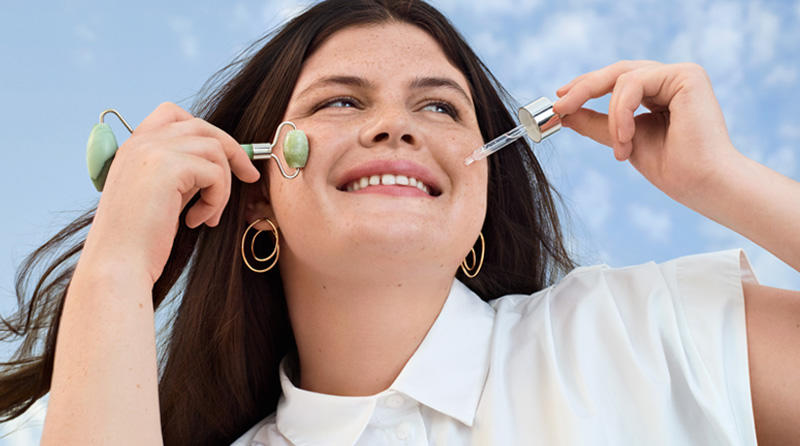What Is Skin Purging and Is It Actually Good for Your Skin?
We’ve all been there. We buy ourselves a new skincare treat and settle in for a night of self-care, only to be met with flare-ups and irritations. And while sometimes this can be a sign of allergies or acne, you might have been experiencing skin purging - but can this be a good thing?
We asked CeraVe’s Dr Shireen to explain the science behind what skin purging really is, why sometimes your skin has to get worse before it gets better, and when to call time on something new.

What is skin purging?
Skin purging refers to when you use a new product or ingredient on your face that increases the cell turnover rate. During this process, sometimes dirt, excess sebum and oil can also come to the surface - which can cause spots and pustules to form. This is what we refer to as skin purging.
How can I tell the difference between a purge, a breakout, and acne?
It's usually a matter of time before you can tell the difference. Purging can take anywhere from one week to a month, based on the turnover rate of the cells. A breakout due to irritation - or your skin reacting negatively to the ingredients - would take much longer, or it might be a persistent problem. You will normally notice purging in areas where there is already an excess of oil and you've had breakouts or acne in the past.
It's usually a matter of time before you can tell the difference. Purging can take anywhere from one week to a month, based on the turnover rate of the cells. A breakout due to irritation - or your skin reacting negatively to the ingredients - would take much longer, or it might be a persistent problem. You will normally notice purging in areas where there is already an excess of oil and you've had breakouts or acne in the past.
How do I know if my skin is purging?
Typically, if you’re using a new product that’s known to increase cell turnover rates, such as a Retinoid or an exfoliating acid, and you notice your skin becoming dry, peeling, or forming new spots, it’s very likely that your skin is purging.
Is skin purging a good thing?
Although at the time of experiencing these irritations you may feel you are not getting the benefits of the product, it's just a matter of time before you will. Purging means you are getting rid of dead skin, dirt and excess sebum. The biggest mistake people make is to stop using a product due to purging - if you persist you will see the benefits.
Which ingredients cause it?
Any ingredient that increases the cell turnover rate can lead to purging. Retinoids, Alpha and Beta Hydroxy Acids, Benzoyl Peroxide, Azelaic Acid and Vitamin C are the most common ingredients. Chemical peels and facials are also known to cause purging.
What products should I avoid to ensure my skin doesn’t purge?
Avoid products that increase cell turnover. If you do want to use these ingredients and don’t want to purge, then I would advise easing yourself in very gently, and complimenting your routine with nourishing, Ceramide-rich formulas to ease any discomfort and protect your skin barrier. For example, when introducing a Retinol product, start using it twice a week at first, then three times, gradually getting your skin used to the product and regulating cell turnover.
When will I see the benefits of skin purging?
In terms of how long it takes to see the benefits of purging, it really depends on how quickly the cells turnover; typically, it's between four to six weeks. If it’s more than eight weeks and your skin’s still showing signs of purging, this might be a breakout or a reaction. In this case, stop using the product and see your local doctor or Dermatologist to get more advice.
Browse our recommended products for the skin purging process below. To flare or trigger the process, opt for Medik8, The Inkey List, Wishful, or Ole Henriksen products. Then follow up by fixing or treating the skin with our Skinfix, Glow Recipe, CeraVe, Laneige, or Sephora Collection options.

























